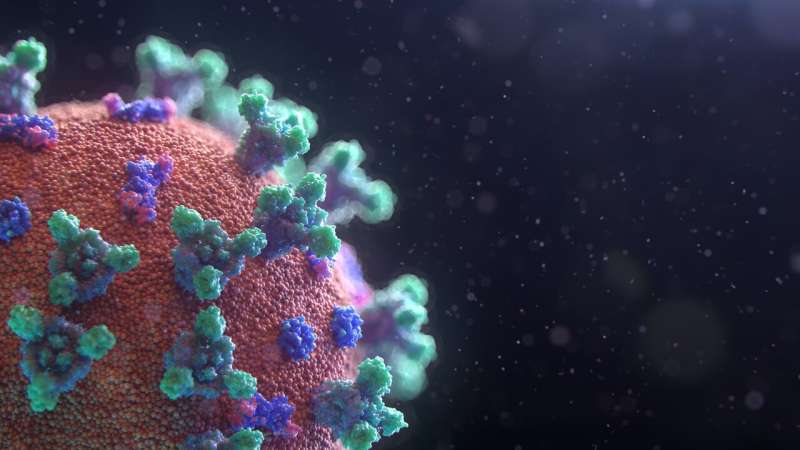
Ever since the appearance of SARS-CoV-2 variants, a crucial question has been on everybody’s minds: will vaccines developed to protect against the “original” strain also work against new variants?
It’s a legitimate concern. In late March, South Africa announced that it had sold off all its doses of the AstraZeneva vaccine after studies revealed that it was less effective against the variant dominant in that part of the world (20H/501Y.V2, from the B.1.351 lineage).
What about the groundbreaking RNA vaccines, then? Researchers have been trying to find out. An article published in the journal Cell suggests that some of the variants could be able to escape neutralization by an immune response, whether acquired from a previous infection with the “original” SARS-CoV-2 strain, or from vaccination.
While such studies demonstrate the importance of sustained vigilance, it is far too early to draw conclusions as to potential clinical implications. But let’s take a closer look.
When a virus “escapes” from a vaccine response
When environmental conditions are optimal (suitable temperature, abundant food, etc.), microorganisms such as bacteria and viruses can multiply exponentially, producing dizzying numbers of copies of themselves. In the process, mistakes—also known as mutations—occur. Some are neutral, neither helping nor hurting the microorganism. Others are harmful, which can cause the microorganism to die out. Others still are favorable, giving the microbes a certain advantage over those without the mutation.
Different kinds of advantages exist—ability to feed off a new resource, a new defense mechanism, resistance to new environmental conditions, etc. Antibiotic resistance developed by certain bacteria comes from these kinds of “beneficial” mutations. Another example is escape from vaccine response, which allows infectious microorganisms to remain impervious to the immune response intended to eliminate them.
In order to study the infectiousness of viruses without having to handle these dangerous micro-organisms, virologists have developed pseudotyped retroviral particles. These tools act as “pseudoviruses”—particles containing only the genes involved in making the viral envelope of the virus in question. This is where we can find the “keys” that allow the virus to enter the cells it infects (the spike or S protein in the case of the SARS-CoV-2 coronavirus).
To these genes, researchers add another that produces a fluorescent protein. This means that if the pseudovirus succeeds in entering the target cells, they will glow fluorescent, making them easier to observe.
This tool has already allowed us to study, for example, some entry mechanisms of the Hepatitis C virus in liver cells. It is also often used to demonstrate how patient antibodies block viruses from entering. If they are “neutralizing,” it means that the antibodies successfully prevent interactions between proteins used by the virus to penetrate cells and the corresponding receptors, otherwise known as “locks,” which are located on the cell surface. In these cases, the virus is stuck at the door, so to speak.
American, German and South African researchers have used this approach to study the ability of serums from vaccinated individuals to neutralize the SARS-CoV-2 spike protein. Here’s what their research showed.
Mutations allowing for the escape from immune response
The authors focused on the two messenger RNA vaccines available, i.e. the Pfizer-BioNTech vaccine (brand name Cominarty, the main vaccine used in France, representing 65.4% of first doses administered) and the Moderna vaccine (in the minority, with 7.7% of first doses). They collected serum samples from 99 vaccinated patients after their first and second injections, and then tested the ability of these samples to neutralize the original S protein, the protein with the D614G mutation, and the S proteins of the so-called “British” variant (B.1.1.7 lineage), “South African” variant (B1.1.351 lineage) and “Brazilian” variant (P1 lineage).
Their results show that the two mRNA vaccines provide effective protection against the original virus, the D614G variant and the British variant, especially after two doses. On the other hand, patient antibodies showed limited neutralization of the S protein from the South African and Brazilian variants, suggesting that these vaccines may be less effective against these variants. This seems to indicate that a small number of mutations could be enough to allow SARS-CoV-2 to escape an immune response induced by these vaccines.
However, the consequences of these results for the population remain to be seen, as highlighted by the authors themselves.
Stay vigilant
Though conducted with a high level of rigor, this is nevertheless an in vitro study, meaning that conclusions cannot be drawn as to the clinical repercussions of these results, which were obtained from cultured cells. We are still lacking information on vaccinated individuals’ cell immunity, which could protect them despite the lack of humoral immune protection, i.e. protection from antibodies.
It could also be interesting to study the neutralizing capabilities of serums from people who received the AstraZeneca or Johnson & Johnson vaccine, a single-dose vaccine that has been available in French pharmacies since April 24. It could also help us understand the abilities of pseudotyped retroviral particles based on the so-called “Indian” variant (20A/484Q, B.1.617 lineage) to escape the effects of vaccines. That would provide indications as to their potential role (still up for debate) in the pandemic currently raging in India.
Finally, these results will have to be corroborated through observations in the general population, in order to answer two questions: can vaccinated people be infected by these variants? If so, do they develop severe forms of the infection, and in what proportions compared to non-vaccinated people?
Still, these new developments are reassuring, particularly for the situation in France—it would appear that the mRNA vaccines currently available provide effective protection against the British variant that is currently circulating in large numbers.
Source: Read Full Article
